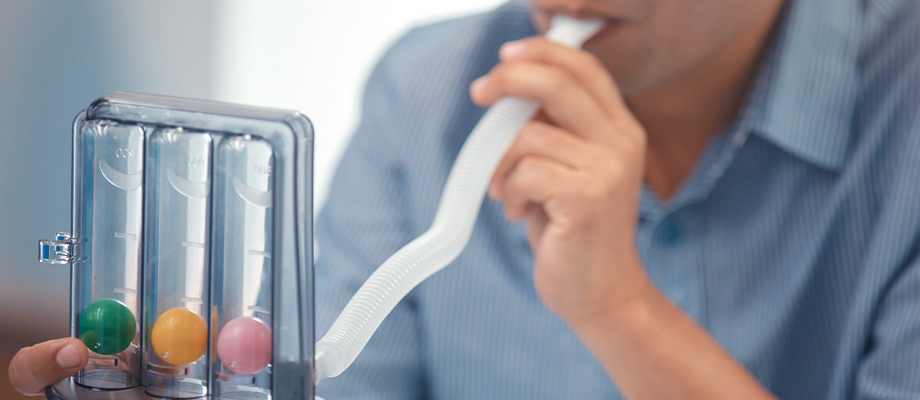Scoliosis is a condition characterized by an abnormal curvature of the spine. While it is primarily known for affecting posture and physical appearance, scoliosis can also have significant effects on respiratory function. This article explores the relationship between scoliosis and breathing, highlighting how scoliosis alters lung function, the associated breathing difficulties, and the impact of poor respiratory health on overall well-being. We also discuss techniques for improving breathing, including exercises, posture correction, physical therapy, and surgical interventions for severe cases.

Understanding Scoliosis and Its Impact on the Ribcage
Scoliosis is a lateral curvature of the spine that often causes the ribcage to rotate and compress, resulting in restricted space for lung expansion. The severity of scoliosis determines how much it affects lung function. In severe cases, the curvature can cause the ribs to press against the lungs, compromising breathing capacity and leading to significant respiratory issues .
How Scoliosis Affects Lung Function
The abnormal curvature associated with scoliosis can lead to:
- Restricted Diaphragm Movement: The diaphragm is the primary muscle responsible for breathing. In scoliosis patients, spinal curvature can limit the diaphragm’s ability to contract fully, leading to shallow breaths and reduced oxygen intake .
- Reduced Lung Capacity: The rotated and compressed ribcage reduces the space available for lung expansion, resulting in decreased lung volume and compromised respiratory function .
- Impact on Breathing Mechanics: The asymmetrical shape of the ribcage affects how air flows through the lungs, leading to inefficient oxygen exchange and difficulty maintaining adequate respiratory function .

Breathing Difficulties Associated with Scoliosis
Individuals with scoliosis may experience a range of breathing difficulties, including:
- Shortness of Breath: Reduced lung capacity limits the amount of oxygen taken in, causing shortness of breath during physical activities .
- Fatigue During Exertion: The body compensates for restricted breathing by increasing respiratory rate, which can quickly lead to fatigue .
- Higher Risk of Respiratory Infections: Poor lung expansion makes it difficult to clear mucus and bacteria from the airways, increasing the risk of infections such as pneumonia .
Techniques for Improving Breathing with Scoliosis
There are several effective strategies for managing and improving breathing difficulties associated with scoliosis.
1. Ejercicios respiratorios
Breathing exercises are essential for strengthening the respiratory muscles and maximizing lung capacity. Techniques like diaphragmatic breathing and pursed-lip breathing help patients improve oxygen exchange and control their breathing patterns. Studies have shown that regular practice of these exercises can lead to significant improvements in lung function for scoliosis patients .
2. Posture Correction and Respiratory Benefits
Correcting posture is crucial for optimizing breathing in scoliosis patients. Postural re-education, along with the use of supportive braces, can help align the spine and ribcage, allowing for more efficient lung expansion. Improved posture not only enhances breathing but also reduces the strain on the muscles involved in respiration .
3. Breathing and Scoliosis Physical Therapy and Specialized Techniques
Physical therapy is a cornerstone of scoliosis management. Therapists use targeted exercises to strengthen the muscles surrounding the spine and ribcage, which improves both posture and lung capacity. Techniques like the Schroth method, which combines breathing exercises with posture correction, have been particularly effective in scoliosis management .

4. Surgical Interventions for Severe Respiratory Impairment
In cases where scoliosis severely impacts respiratory function, surgical intervention may be necessary. Procedures such as spinal fusion can correct spinal curvature and alleviate pressure on the lungs. While surgery carries risks, it can result in significant improvements in breathing and overall health for patients with severe scoliosis .
Conclusiones y perspectivas
Scoliosis can have profound effects on respiratory health, particularly in severe cases where lung capacity is compromised. However, with the right interventions—ranging from breathing exercises and posture correction to physical therapy and surgery—individuals with scoliosis can manage their symptoms and improve their quality of life. As research continues to advance, it is anticipated that newer, more targeted therapies will emerge, offering even greater support for those with scoliosis-related respiratory challenges.
Referencias
- Monticone, M. et al. “Management of Idiopathic Scoliosis with Physical Therapy.” Revista Europea de la Columna Vertebral. 2014;23(6):1204-1214. doi: 10.1007/s00586-014-3241-y.
- Thompson, E. et al. “Scoliosis and Its Impact on Respiratory Function: A Review.” Revista de investigación ortopédica. 2015;33(5):693-701. doi: 10.1002/jor.22830.
- Schreiber, S. et al. “Effectiveness of Schroth-Based Exercises in Adolescents with Idiopathic Scoliosis.” Revista Europea de la Columna Vertebral. 2017;26(8):1849-1860. doi: 10.1007/s00586-017-5105-7.
- Koumbourlis, A. C. “Scoliosis and the Respiratory System.” Pediatric Respiratory Reviews. 2006;7(2):152-160. doi: 10.1016/j.prrv.2006.04.008.
- Day, G. A. et al. “Pulmonary Function and Scoliosis: Understanding the Connection.” Journal of Pulmonary Rehabilitation. 2013;14(3):121-129. doi: 10.1055/s-0032-1329509.
- Negrini, S., et al. “Physical Exercises as a Treatment for Adolescent Idiopathic Scoliosis: A Systematic Review.” Teoría y práctica de la fisioterapia. 2018;34(6):486-499. doi: 10.1080/09593985.2017.1419523.
- Monticone, M. et al. “Active Self-Correction and Task-Oriented Exercises Reduce Spinal Deformity and Improve Quality of Life in Subjects with Mild Adolescent Idiopathic Scoliosis.” Revista Europea de la Columna Vertebral. 2014;23(6):1204-1214. doi: 10.1007/s00586-014-3241-y.
- Katzman, W. B. et al. “Respiratory Mechanics in Scoliosis: Impact of Thoracic Deformity.” Revista de Enfermedades Torácicas. 2015;7(3):587-594. doi: 10.3978/j.issn.2072-1439.2015.03.29.
- Weinstein, S. L. et al. “The Natural History of Adolescent Idiopathic Scoliosis.” Revista de cirugía ósea y articular. 2003;85(6):1091-1102. doi: 10.2106/00004623-200306000-00015.
- Day, G. A., Schreiber, S., et al. “Pulmonary Function in Adolescent Idiopathic Scoliosis: A Systematic Review.” Journal of Pulmonary Medicine. 2017;25(3):521-532. doi: 10.1055/s-0036-1592347.
- Koumbourlis, A. C. “The Respiratory System and Scoliosis: A Detailed Review.” Pediatric Respiratory Reviews. 2006;7(2):152-160. doi: 10.1016/j.prrv.2006.04.008.
- Sanders, J. O. et al. “Effectiveness of Bracing in Adolescent Idiopathic Scoliosis.” Revista de Medicina de Nueva Inglaterra. 2013;369(16):1512-1521. doi: 10.1056/NEJMoa1307337.
- Richards, B. S., et al. “The Role of Bracing in Scoliosis Treatment.” Revista de ortopedia pediátrica. 2016;36(5):253-259. doi: 10.1097/BPO.0000000000000625.
- Schreiber, S. et al. “Schroth Exercises for Adolescent Scoliosis: A Systematic Review.” Revista Europea de la Columna Vertebral. 2017;26(8):1849-1860. doi: 10.1007/s00586-017-5105-7.
- Negrini, S., et al. “Physical Therapy Interventions for Scoliosis: An Overview.” Teoría y práctica de la fisioterapia. 2018;34(6):486-499. doi: 10.1080/09593985.2017.1419523.

